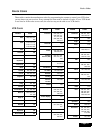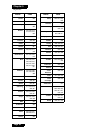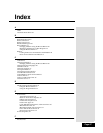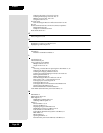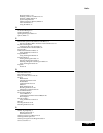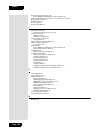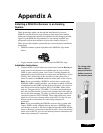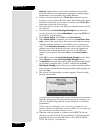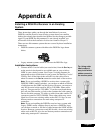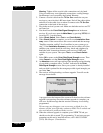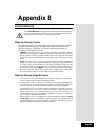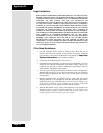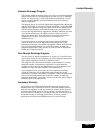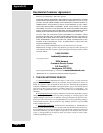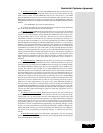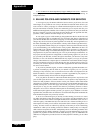
Page 83
Appendix A
Installing a DISH Pro Receiver in an Existing
System
These instructions guide you through the installation of your new
DISH Pro satellite receiver in an existing system where your satellite
dish(es) has already been installed and pointed for the strongest possible
signal. If your DISH Pro dish antenna(s) is not already installed, you
will need to follow the Installation Instructions found in Chapter 4.
There are two dish antenna systems that are covered by these installation
instructions.
• DISH Pro antenna systems which have the DISH Pro logo shown
below.
• Legacy antenna systems which do not have the DISH Pro logo.
Installation Instructions
1. Connect an RG-6 coaxial cable (see notes below) from the SAT IN port
on the receiver's back panel to an available port on your switch or
LNBF in your existing system. See Chapter 4 wiring diagrams for
appropriate receiver connections in your system. See Running Coaxial
Cabling. Peel off the blue sticker and affix it to the cable close to
where it connect to the
SAT IN connection on the back of the receiver.
Note: If you are installing a DISH Pro receiver into a system with
DISH Pro LNBFs (and/or switches), you can have as much as 200 feet
of cable between the LNBF and the receiver. However, you must use
only RG-6 coaxial cables rated for 950 to 2150 MHz. Some cables
may say "Swept tested for 2150 MHz." If you have any doubt about
this, ask your Dish retailer, or look on the container the cable came in.
Do not use cable company TV cables or cables from other satellite TV
systems not rated for 950-2150 MHz. These other cables may cause
signal loss. Do not use existing cables such as RG-59. Also, be sure
that any outdoor connections are made using waterproof F-
connectors.
Note: If you are installing the DISH Pro receiver into a system with
Legacy LNBFs and/or switches (that do not have a DISH Pro logo),
you can have as much as 100 feet of cable between the LNBF and the
receiver. However, you must use only RG-6 cable - do not use existing
cables such as RG-59. Also, be sure that any outdoor connections are
made using waterproof F-connectors.
Tip: Using cable
labels makes it
easy to tell which
cables connect to
the receiver ports.



